How to Infuse Creativity into your Nonprofit’s Common Reporting Tools
Many nonprofit organizations are missing out on a prime opportunity to creatively tell their financial story in a way that attracts and inspires donors.
Staying compliant with GAAP and IRS rules is important, but it does not mean organizations shouldn’t use their 990 return, financial statements, and annual report to tell a compelling story about their mission and the impact their organization has on the community.
With a little creativity and guidance from industry experts, organizations can transform the mundane into a moving story that motivates donors.
Develop the Story Framework
One way to simplify the storytelling process is to start with the elements of a basic fairy tale, advises Dan Tritch, market leader at Your Part-Time Controller (YPTC). Fairy tales are short, impactful stories with a universal appeal that provide a relevant framework for structuring your nonprofit’s financial story.
The main elements of a fairy tale include:
- Villain The character that drives the conflict and makes a story compelling. In financial storytelling, this element can usually be found in the organization’s mission, which clearly and concisely states the problem the organization is trying to solve.
- Hero/Heroine Those who will fight and overcome the the problem. For nonprofit organizations, this element should outline who will address the problem and how. This includes the organization’s staff, partnerships, and its unique approach to solving a serious community problem.
- Royalty It’s all about power, and in this fairy tale, cash is the king that holds the power. The financial story is about the organization’s ability to manage that cash.
- Happy Ending Financial stories should report the organization’s short-term and long-term success, describing the positive, sustainable impact that the organization accomplished.
Form 990: Share Compelling Stories
First, dispense with the thinking that Form 990 is just a tax return. The form’s narrative portions offer nonprofit organizations a valuable opportunity to assert their mission, showcase their successes, and attract donors, grantors, and other contributors.
“This is your opportunity to tell your story,” says Brenda Blunt, CPA and partner at Eide Bailly. She suggests answering these questions when completing the 990, “Have I identified the problem, explained what progress we’re making, and what hurdles we need help with? Whatever it is, make sure you tell your story,” she says.
Blunt offers these suggestions to tell your financial story in your Form 990:
- Part I is where you put your mission statement and your most important activity.
- Part III is where you put your organization’s unique approach to solving a serious community problem and describe what it actually accomplished during the year.
- Parts VI and VII can be used to introduce the organization’s staff, partnerships, and approach to managing cash.
Financial Statements: Make the Factual Fascinating
While financial statements may be a little more limiting, there are opportunities to add your story, explains Madeline Moran, manager at Eide Bailly. “One of the best places to include the mission statement is in the footnote section of the financial statement. Including this in the first sentence of Note 1 allows the organization to emphasize the importance of its mission in solving the problem faced by its community,” says Moran.
“This is also a great place to highlight the organization’s staff, partnerships, and initiatives. Take the opportunity to go beyond the GAAP requirements to effectively describe the programs and add color to illustrate these. Get creative and highlight your story for your donors.” She recommends organizations add to the financial templates provided by their CPAs and accountants to tell their own story through their financial statements.
The Management Discussion and Analysis (MD&A) section also represents an opportunity for nonprofits to step outside the restrictive confines of financial statements to better tell their story. The content must be consistent financially, but it’s a great place for organizations to tell a more detailed and descriptive financial story.
The Notes section is a great place to tell a story about how the organization manages cash and the successful outcomes the organization has achieved.
Annual Report: Inform and Ignite Donors
Annual reports offer even more flexibility and leeway to tell your organization’s financial story using the elements of a basic fairy tale, says Tritch. “You can use narrative and financial metrics to describe the problem in the community and how your organization will solve it,” he says.
Few nonprofits reveal cash balance metrics for their organization in their annual reports, says Tritch. Doing so can allow organizations to stand out by disclosing information such as present day cash on hand or unrestricted cash vs. restricted cash.
Sharing the organization’s story on other online platforms such as Charity Navigator, GuideStar, and social media is also important.
Craft the Narrative in Unique Ways
Going beyond the traditional marketing tools and using 990s, financial statements, and annual reports to tell a compelling story gives organizations another opportunity to share successes, build confidence with donors, and inspire institutional and individual funders, board members, and other members of the community to take action.
Key Takeaways
- Form 990s, financial statements, and annual reports are more than mundane financial documents. Use them to tell a compelling story about the organization’s mission, programs, and outcomes to attract donors.
- Including these key components can help organizations better tell their true financial stories in a way that can motivate donors:
The Problem The issues your organization is addressing and seeking to overcome.
The Solution The programs, initiatives, and people that will work to overcome the problem.
Cash Talk about how the organization effectively manages cash.
Sustainable Impact The accomplishments of the organization. - While accounting organizations do provide a template with the minimum information that must be communicated within certain areas of the financial statement and 990, organizations can, and should, go beyond the minimum requirements to tell their financial story and motivate donors. In other words, don’t just check the box and move on. Get creative.
- Get input from the marketing and development teams when creating your financial story, particularly when showcasing the organization’s accomplishments and successes in positively impacting communities.
- The MD&A is an often-missed opportunity for nonprofits to tell a more detailed and descriptive financial story.
- Share the organization’s financial story on online platforms such as Charity Navigator, GuideStar, and social media.
Examples of Effective Narratives
Form 990
Part I, “Summary,” line 1:
Briefly describe the organization’s mission or most significant activities
(i.e. Identify the problem).
Example:
To end systemic deprivation, poverty, and hunger in rural Uganda.
Part III, “Statement of Program Service Accomplishments,” line 1:
Briefly describe the organization’s mission
(i.e. Identify the problem and solution).
Example:
Working on behalf of HIV/AIDS orphans in rural Uganda to end systemic deprivation, poverty, and hunger through a holistic approach to community development, education, and health care.
Part III, “Statement of Program Service Accomplishments,” line 4:
Describe the organization’s program accomplishments for each of its three largest program services
(i.e. Define the solution and how the problem was addressed).
Example:
The hospital provided 19,201 inpatient days of care. During the year, our bone marrow transplantation program accounted for 4,622 or 24% of those inpatient days. Patients made 70,374 clinic visits during the year.
Financial Statements
Notes to Combined Financial Statements
1. Organization
(i.e. the problem).
Example:
Fighting the causes of catastrophic illnesses, improving related treatments, and finding cures for their diseases.
Notes – Principal Activity and Significant
Accounting Policies, “Advisory”
(i.e. the solution).
Example:
XY organization helps other organizations adapt to an ever-changing world as they continually reinvent themselves to ensure relevance and effectiveness.
